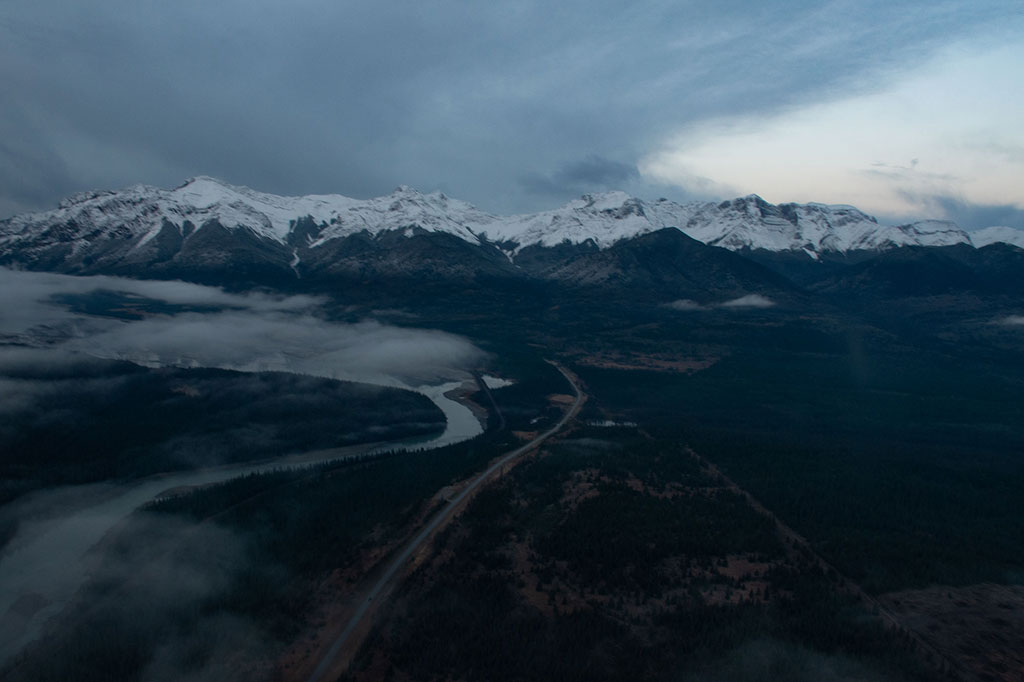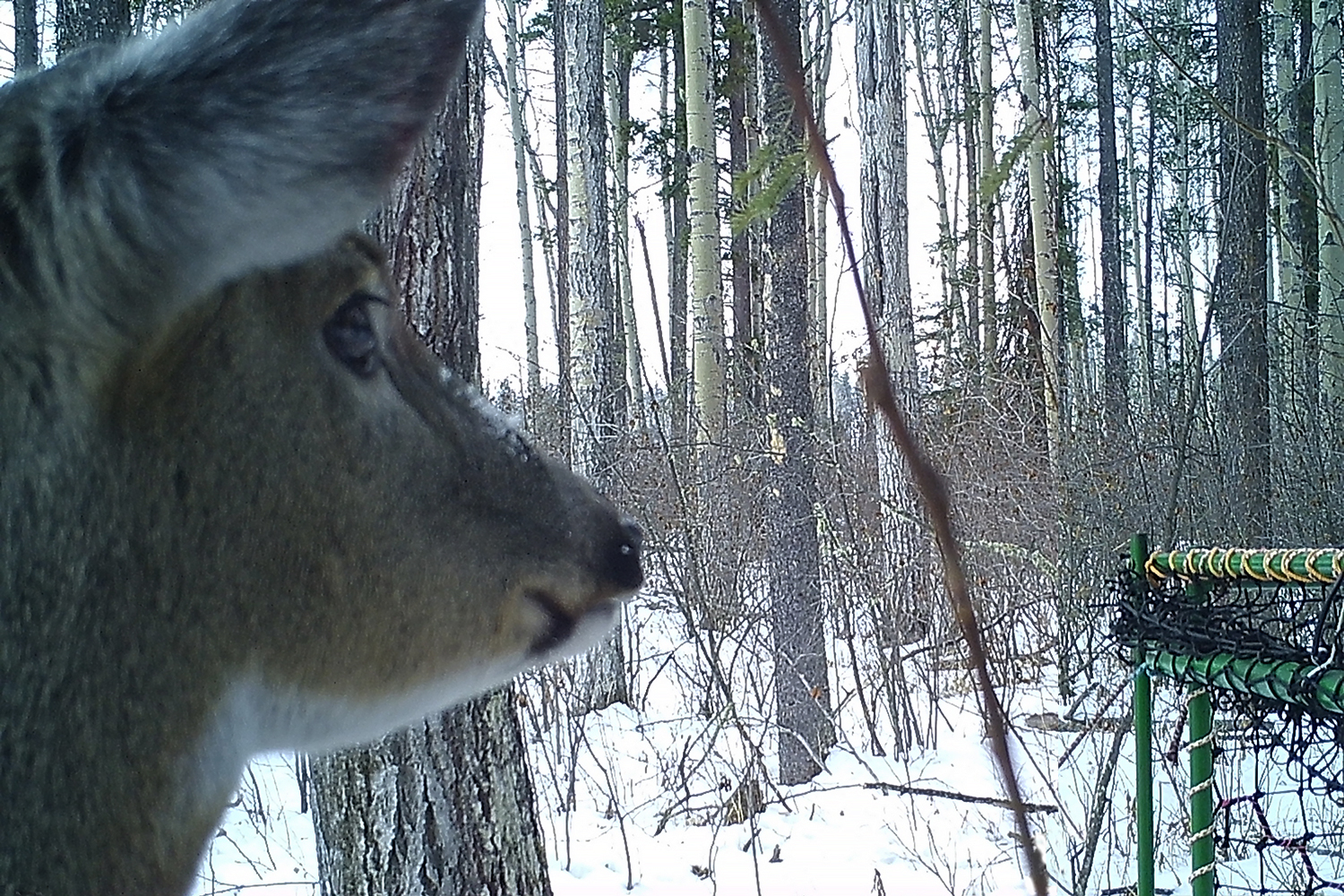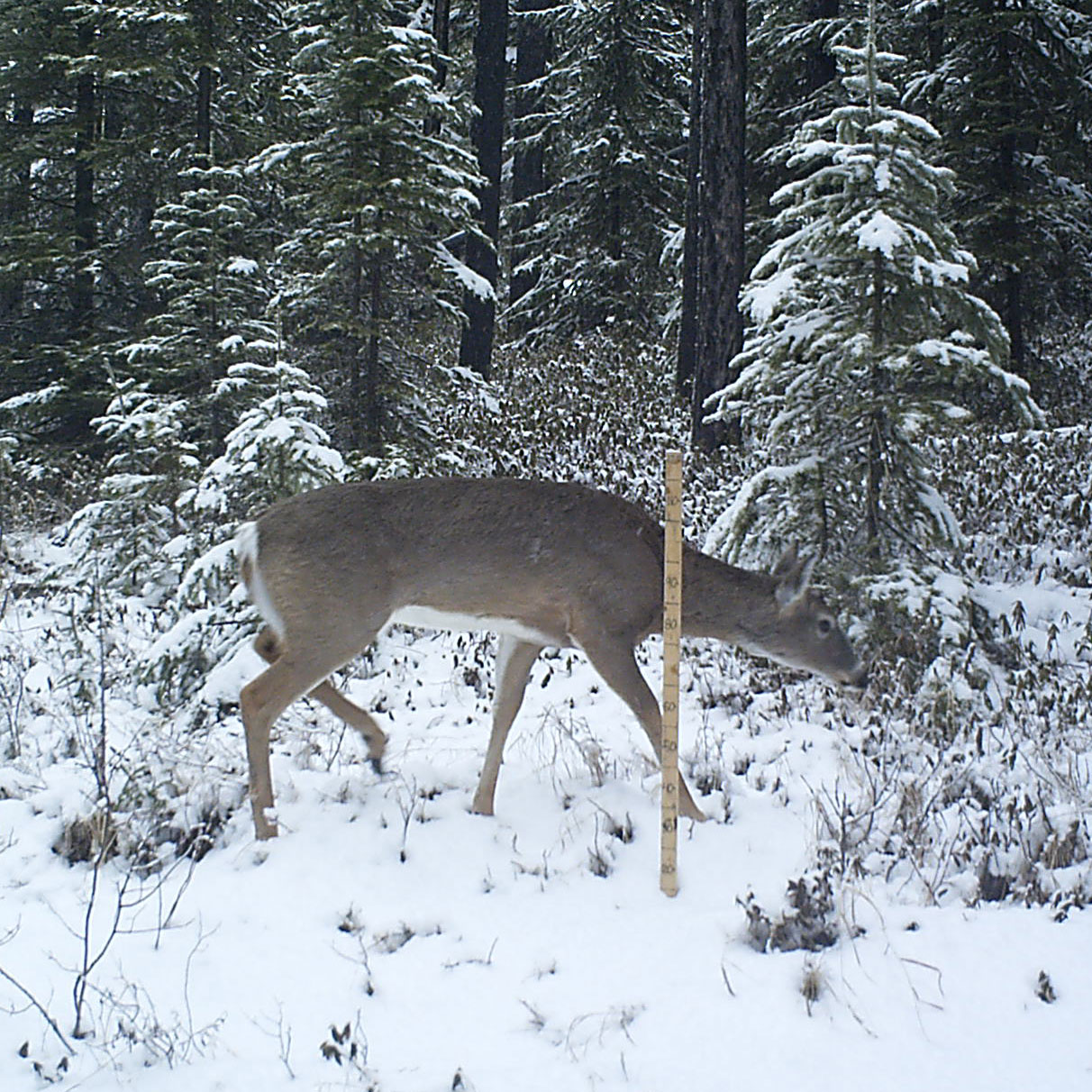
A century of human activity has heavily fragmented much of western Canada’s boreal forest, including the A La Peche, Redrock-Prairie Creek, and Narraway caribou ranges in western Alberta. Roads, harvest blocks, seismic lines, pipelines, and wellsites replace the large tracts of old growth forest that caribou need with strips and patches of young stands numbering in the tens of thousands. These attract animals that forage on the grasses, forbs, shrubs, and deciduous trees that spring up, which in turn draws predators. In caribou ranges, the result is that caribou encounter increasing numbers of wolves, bears, and cougars.
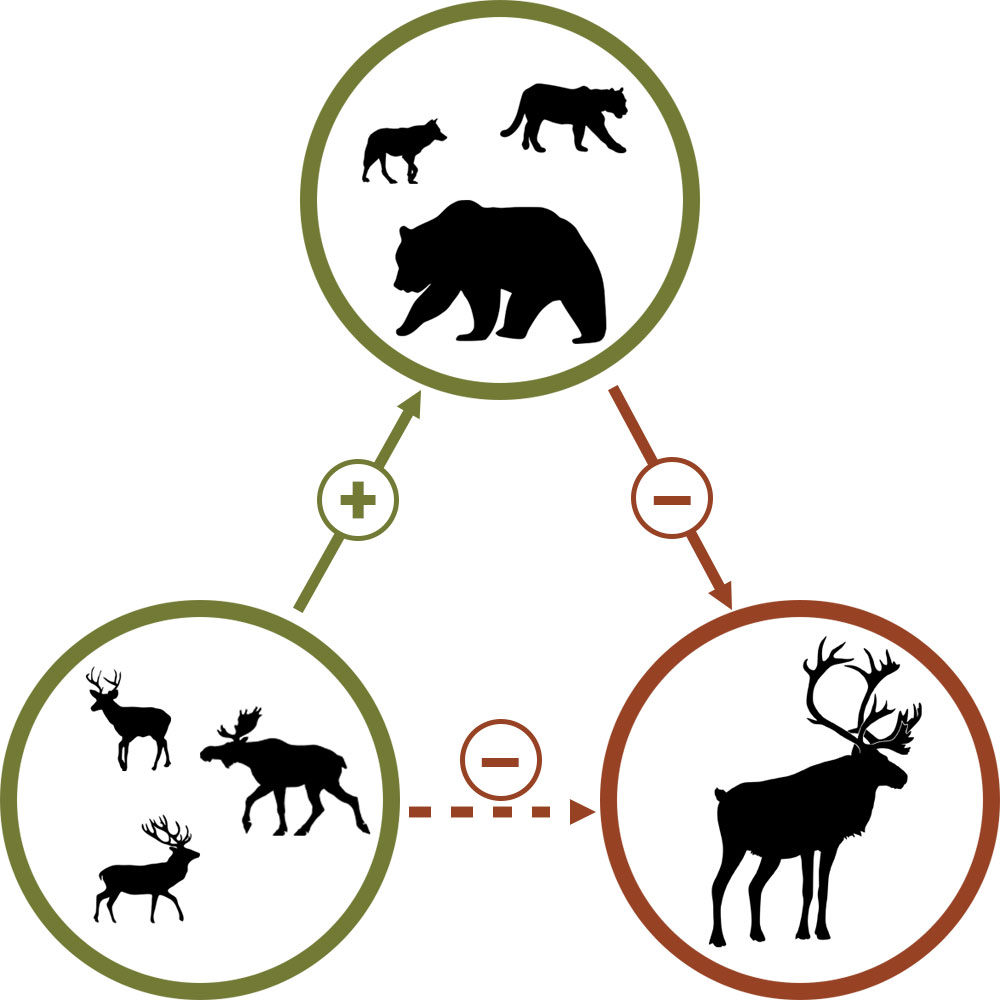
This is a relationship that ecologists call apparent competition. The immediate cause of caribou declines is higher predation, and the greater number of predators is a result of greater overlap between caribou and their cousins in the deer family. For decades, the cousin that scientists identified as the primary draw for predators in this area has been moose. However, another caribou cousin has been steadily spreading northwest into caribou ranges: white-tailed deer. The landscape change already mentioned provides more food, supporting larger populations of deer. At the same time, climate change is leading to milder winters and lower snow depths which leads to less winter mortality for the smaller ungulates that would normally struggle where caribou and moose thrive.
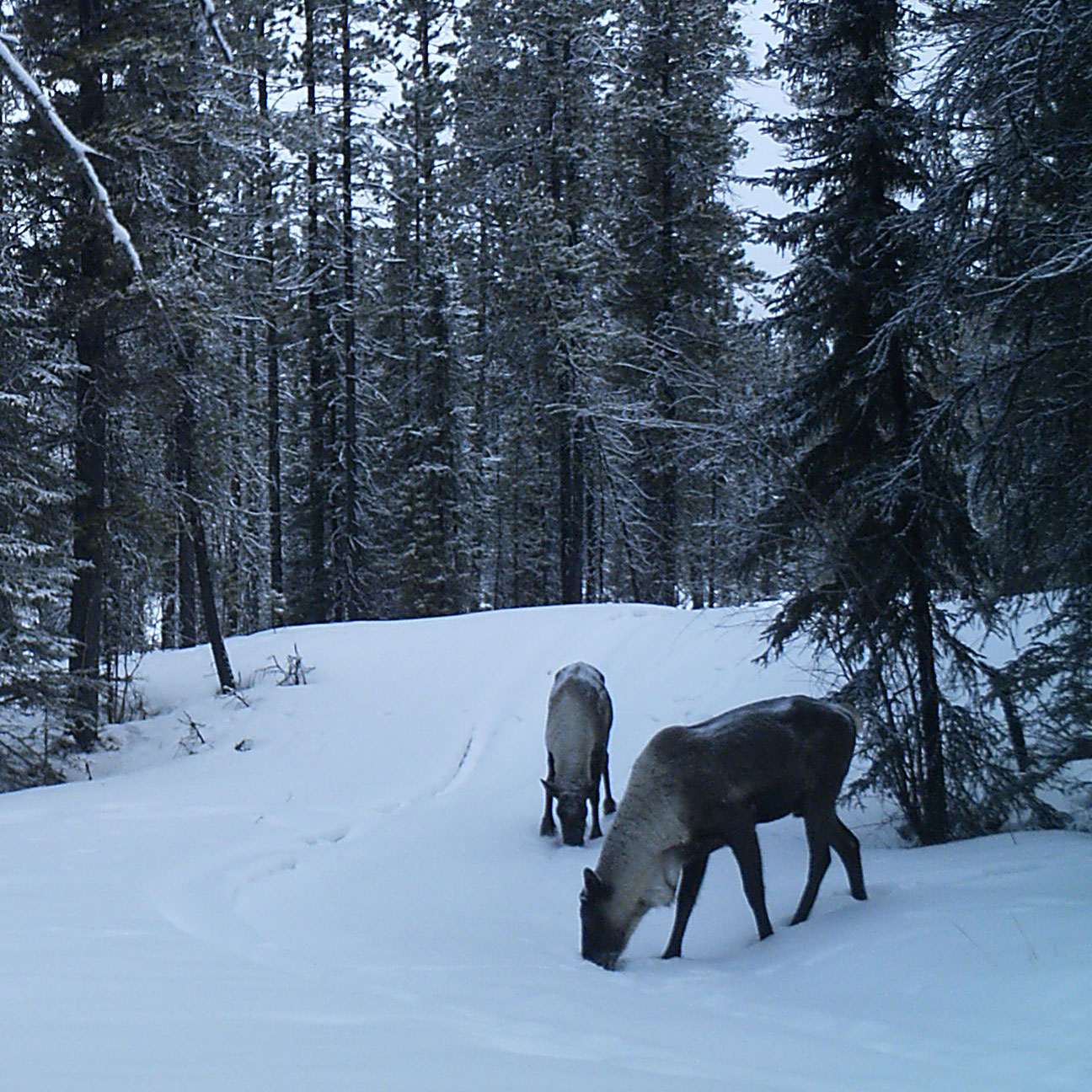
As a relative newcomer to northern Alberta and BC, white tailed deer are still understudied. Scientists and land managers in the western Alberta have to rely on studies from other regions when it comes to the relationship between white-tailed deer and different landscape features, and their effects on the rest of the ecosystem. Suzanne Stevenson has just completed her Master’s thesis on this topic, which lays the groundwork for understanding the ecology of white-tailed deer in west-central Alberta, and how they relate to threatened caribou populations.
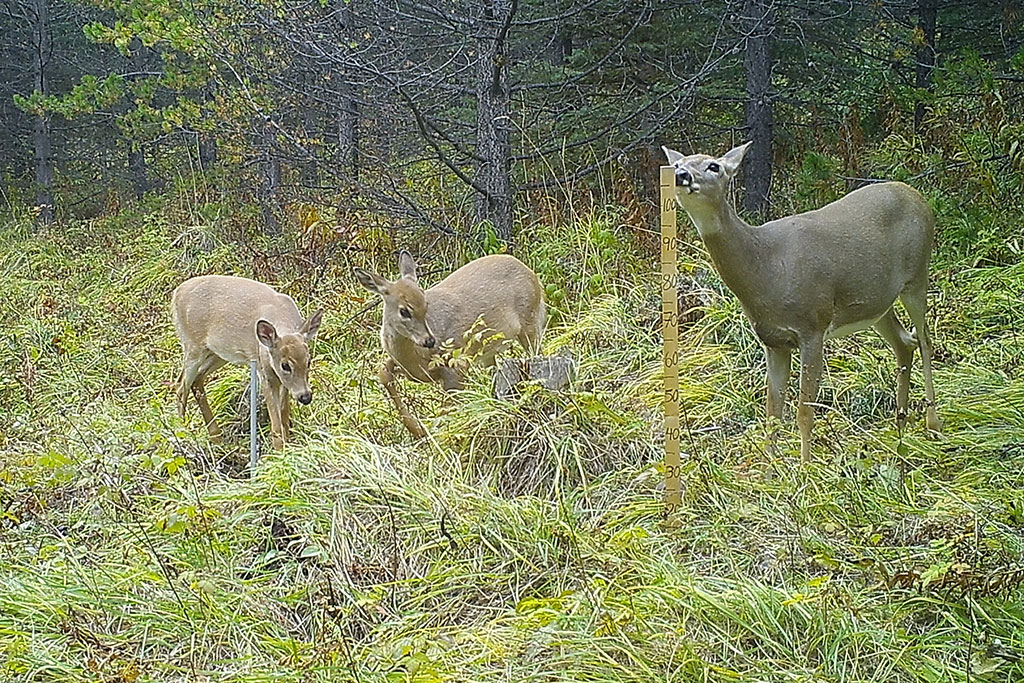
Stevenson looked at this relationship from two key angles: what they eat and where they live. Knowing to what degree these two species select the same areas provides some insight into white-tailed deer as apparent competitors to caribou. It also revealed which human disturbance types are important drivers of deer-caribou overlap, which could be targeted for restoration. Getting information on white-tailed deer diet specific to west-central Alberta is fundamental to understanding its place in the boreal forest, and the resources that are fuelling its northwestern expansion.
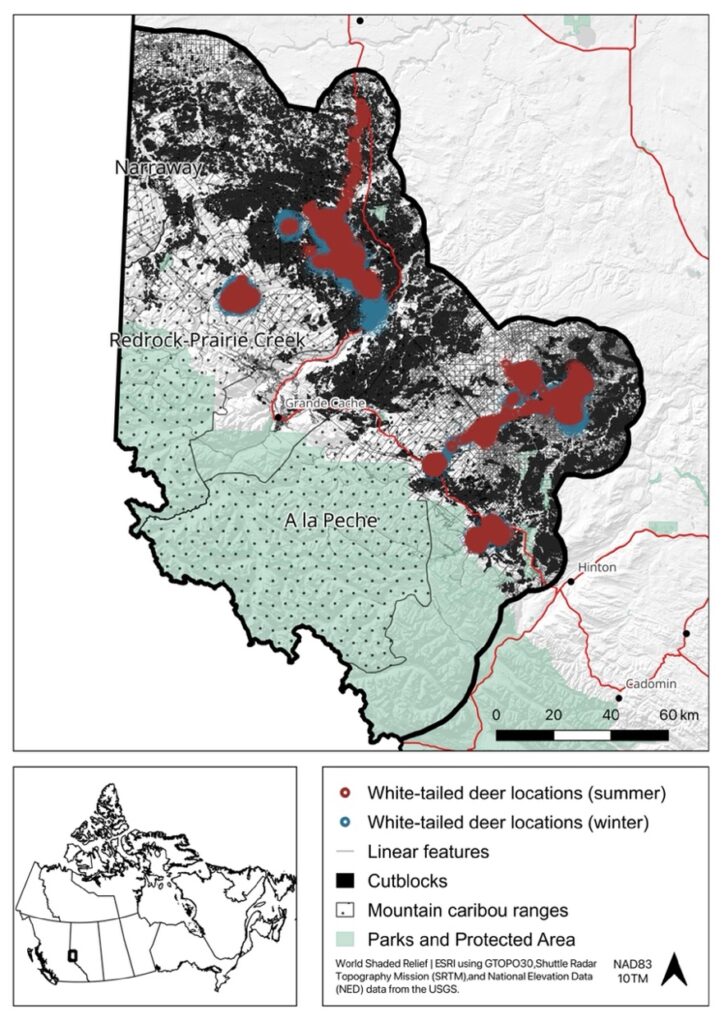
To tackle the question of spatial overlap between deer and caribou, Stevenson used a classic tool of ecology called a resource selection function. A previous Caribou Program initiative had fitted deer with GPS collars, and the Government of Alberta hold a similar GPS dataset for caribou. For each GPS location, Stevenson compared the possible places the animal might have gone to next with where it actually did go. Doing this for thousands of locations reveals which resources the animals are selecting and which they are avoiding.
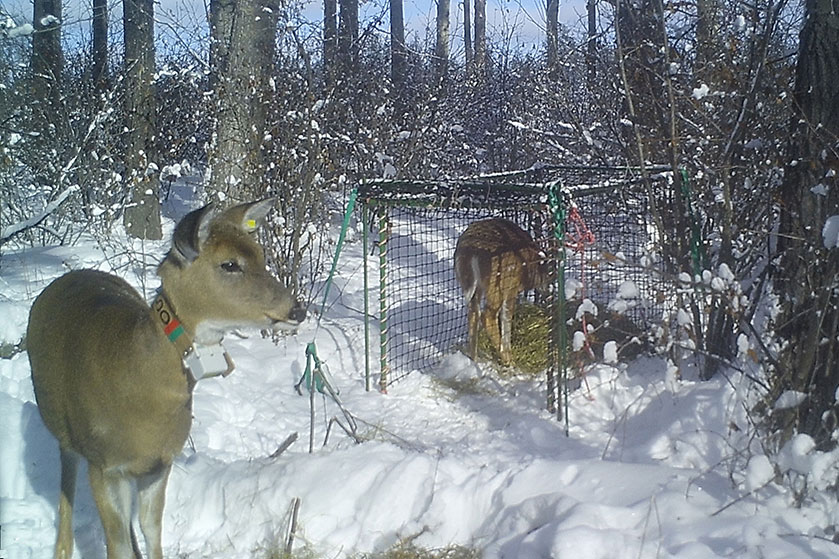
Of course, out in the forest there is a lot of random variation. A sudden sound might scare a deer towards a feature that it doesn’t actually prefer. Features and resources might also only be important in certain combinations. To sift through all the noise in the data and find the real patterns of resource selection, Stevenson made different groupings of forest types, landscape features like ridges or valley bottoms, and human disturbance types, and assessed how well they explain the choices that the white-tailed deer and caribou made. The result is four resource selection functions – one summer and one winter for each species. Stevenson could now see which features on the landscape are ecologically important for caribou and white-tailed deer, and where the species are likely to overlap.
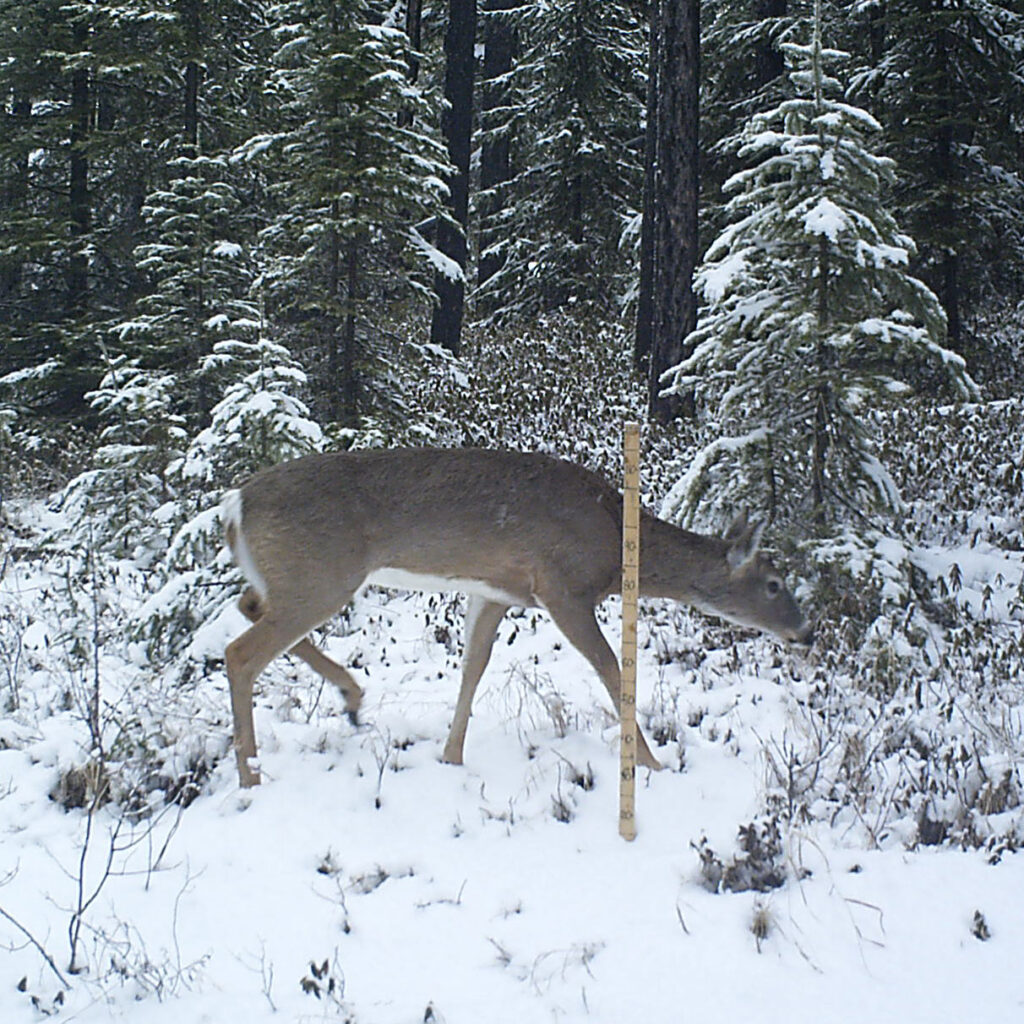
The biggest finding is that white-tailed deer and caribou use mature conifer forest during the winter. This could increase spatial overlap between the two species, which could then raise the odds of predators that target deer encountering caribou. Stevenson also found that white-tailed deer are indeed selecting for young harvest blocks during the summer, which is supports the idea that these features are helping to support a boom in deer populations by providing good forage.
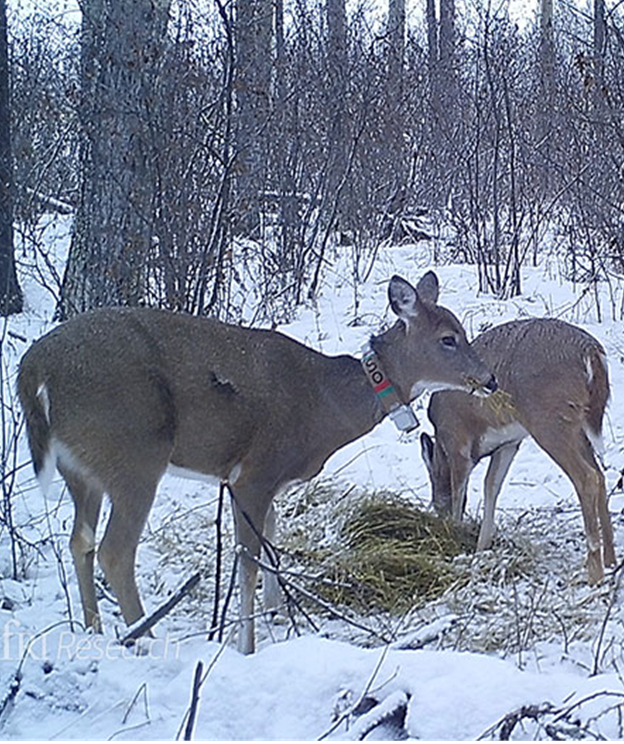
There were a few surprises in the data as well. Unlike in other regions, here white-tailed deer seem to avoid pipelines, seismic lines, and areas of high forest edge density. We’d also expect those to have good forage for deer, so it would be interesting to study this further to determine why in west-central Alberta those features don’t seem to be the attraction that they are in other parts of Canada.
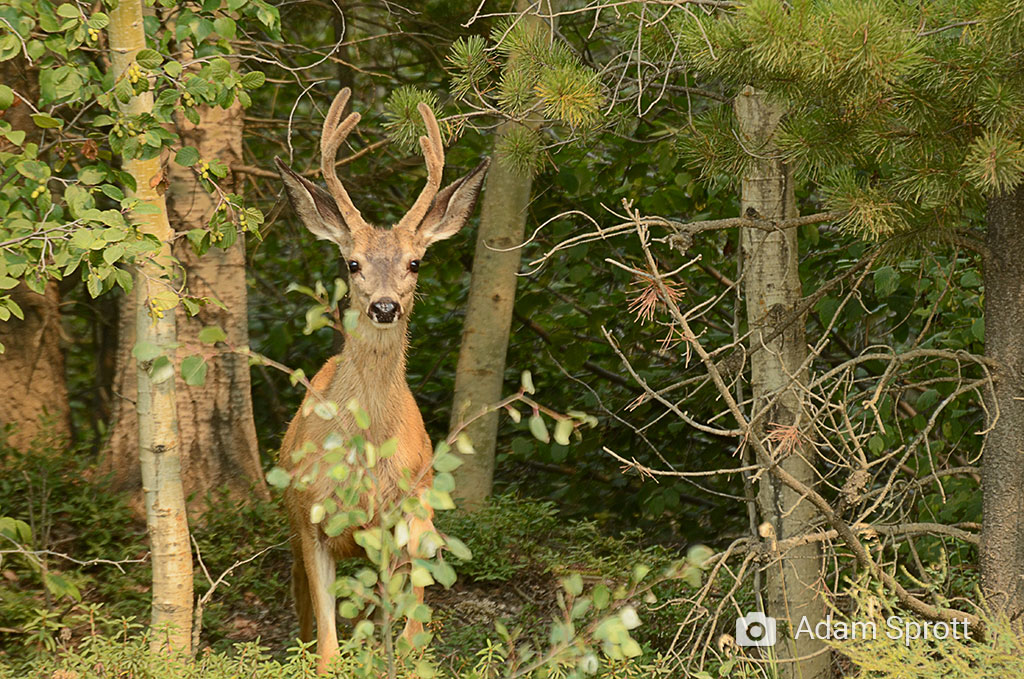
To find out what white-tailed deer and their cousins – caribou, moose, mule deer, and elk – are eating in her study area, Stevenson had the animals’ fecal pellets analyzed with a method called metabarcoding. The pellets were sent to a lab where the plant and fungal DNA were extracted, amplified, and sequenced. The results tell us which types of plants and fungi the animal is eating and give an indication of how large a part of the animal’s diets each food is.
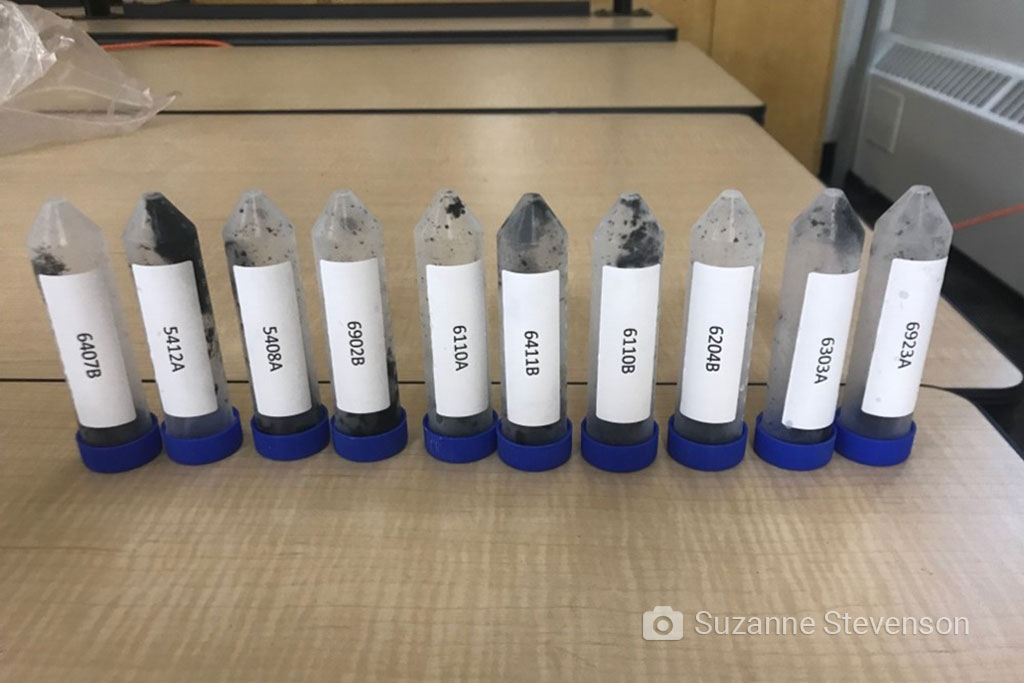
The pellets were collected during winter to provide insight specifically to the winter diet of these ungulates. Not only does this make finding pellets easier to find by follow fresh tracks, but the snow also naturally cools the pellet samples preserving the DNA for future lab analysis.
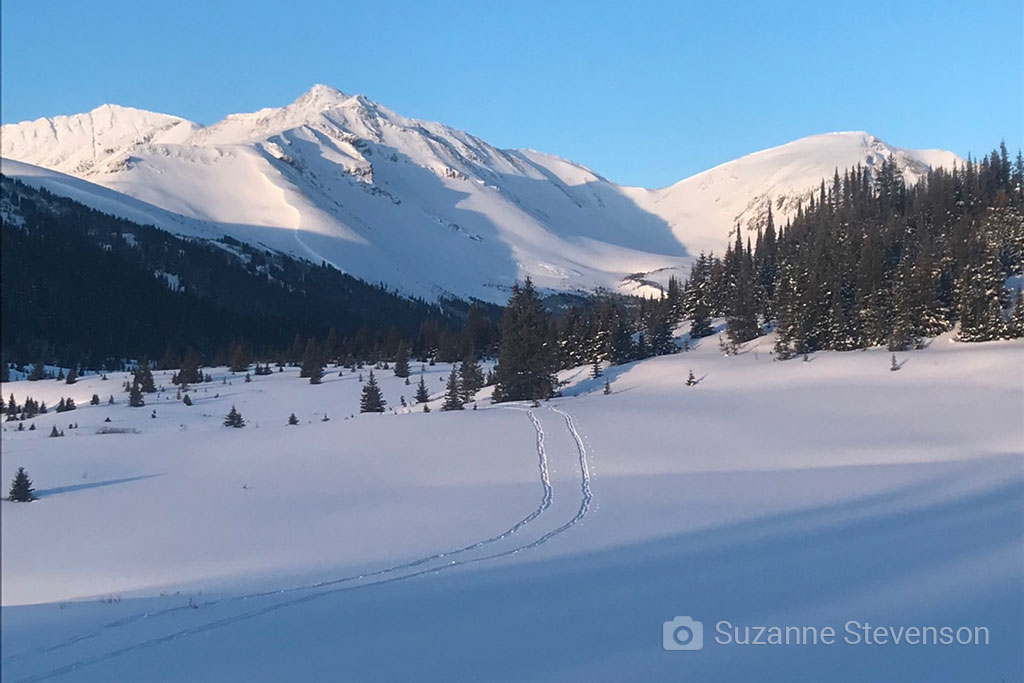
This is a relatively new method for these species in this region. As such, part of the value of this research is to learn the strengths and weaknesses of this approach for future studies. The main advantages of this non-invasive technique are that it is more cost-effective, less labor intensive, and can potentially reveal the exact species than an animal is eating. However, the lab was only able to narrow the food types down to the plant and fungal family level in this and some other recent projects.
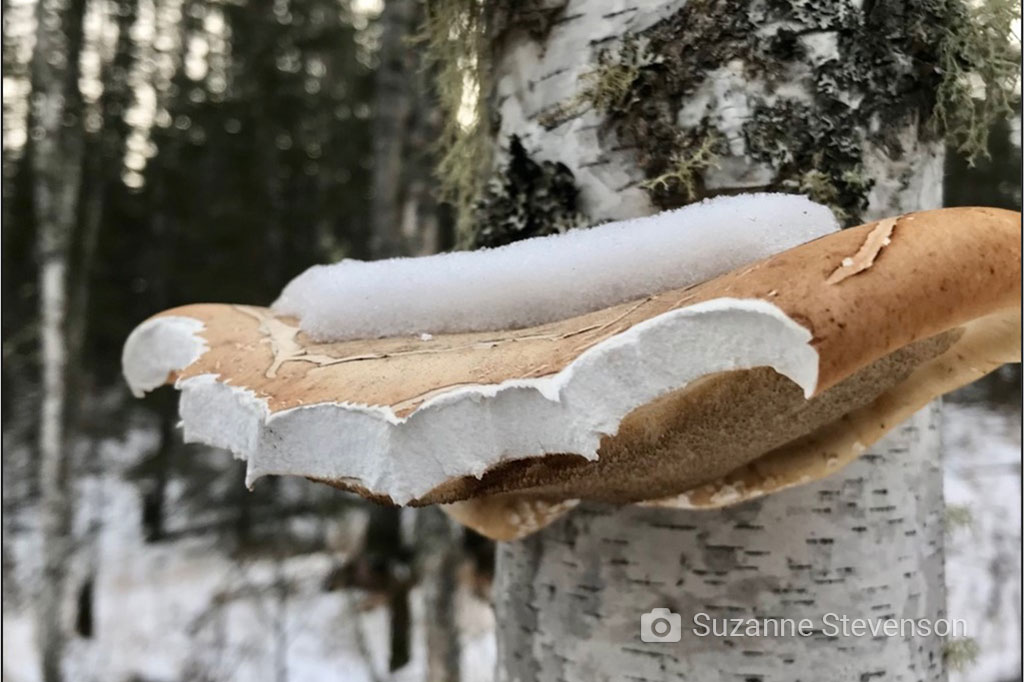
Despite this, the results are still valuable. This is the first direct information on what white-tailed deer eat in Alberta. As expected of generalists, Stevenson found both deer species have highly varied diets, including legumes, butterworts, lichenicolous fungi, mushrooms, and more. Stevenson has also confirmed recent findings that even though caribou are often labeled as a lichen specialist, they do eat plenty of forbs, grasses, and lichenicolous fungi.
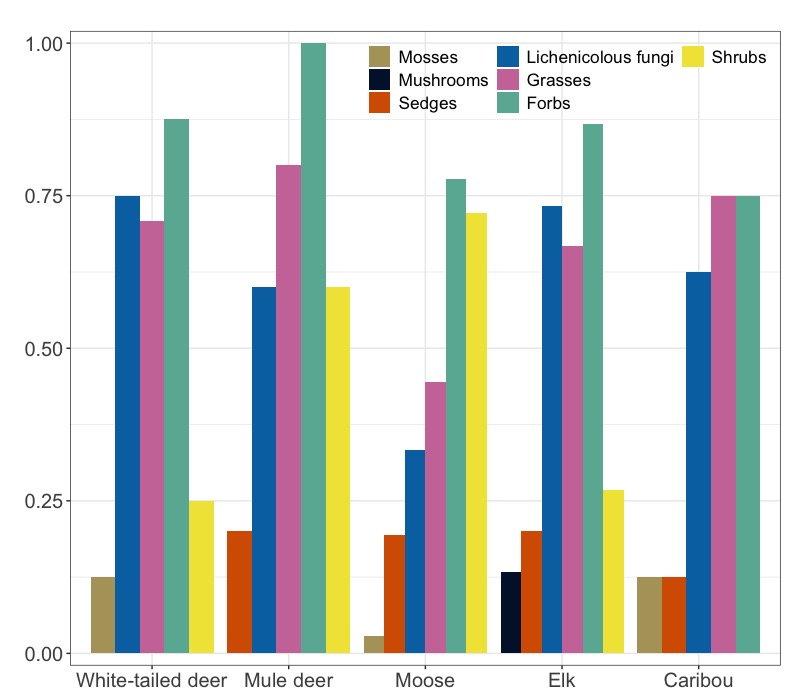
Comparing the five ungulate species, they all ate a large proportion of forbs and had many food species in common. Despite this, the amounts of each type of food were quite different between all the species – and in fact were quite different between each individual white-tailed deer as well. The level of dissimilarity between their diets is in line with findings from northern British Columbia and the Yukon, and is unlike findings from further southeast where deer, moose, and elk had more similar diets.
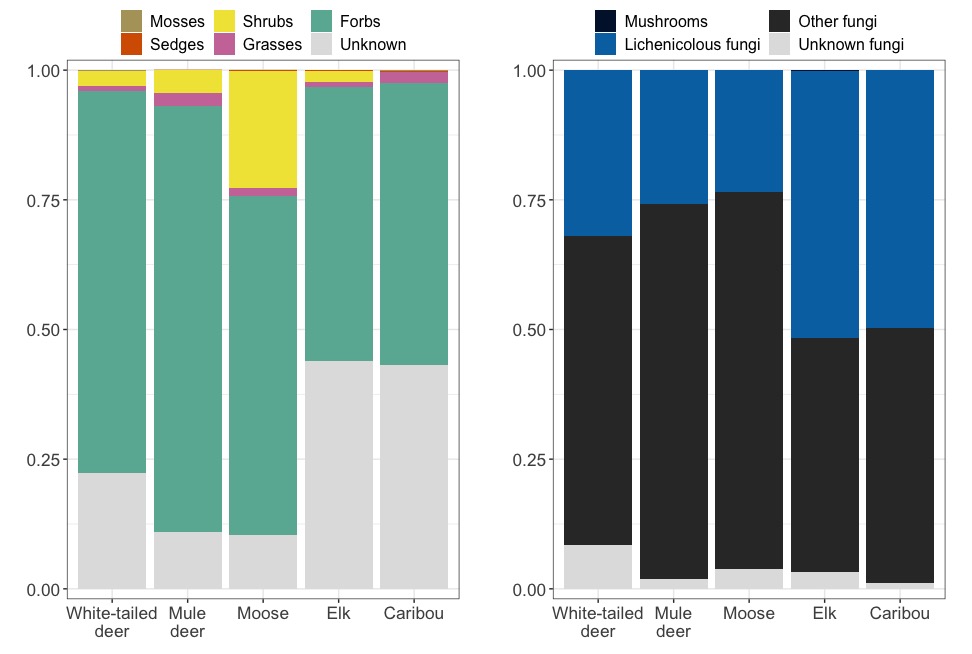
This Master’s thesis adds to what we know about ungulates in west-central Alberta. It provides some of the first data on white-tailed deer resource selection and diet in west-central Alberta, which will be increasingly importance as climate and landscape change continue to support white tailed-deer population growth. This work has shown that white-tailed deer prefer some of the same winter habitat as A La Peche, Redrock-Prairie Creek, and Narraway caribou, demonstrating a possible mechanism for apparent competition. Finally, we now have experience using DNA metabarcoding to investigate ungulate diets in Alberta, so we can judge when this method might be most useful and begin to test improvements.
